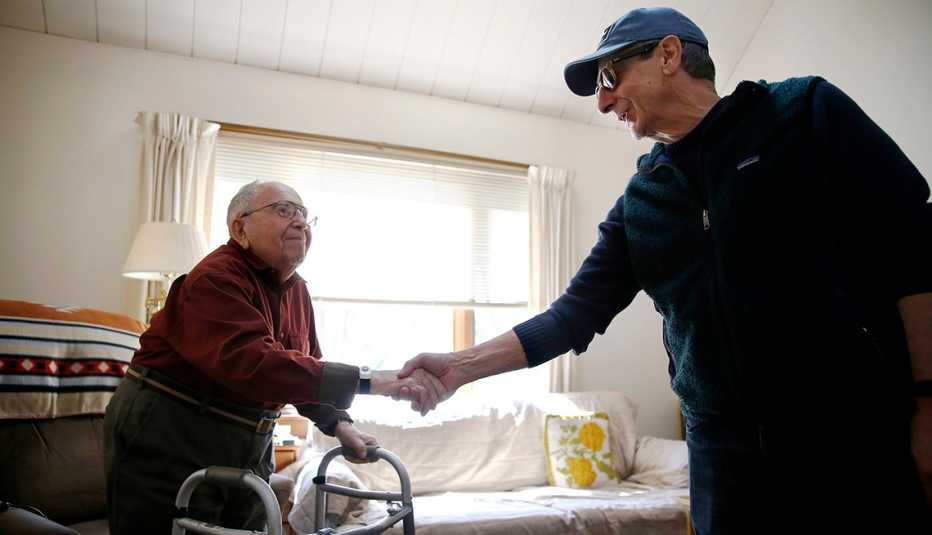Staying Fit


Every Friday, Paula Arnold loads up her car and gets ready to make deliveries for Meals on Wheels of the Monterey Peninsula. She has been a volunteer for the program since 1981 — long enough for the Carmel, California, resident to have taken her daughter, her granddaughter and now her 3-year-old grandson along for the ride.


AARP Membership— $12 for your first year when you sign up for Automatic Renewal
Get instant access to members-only products and hundreds of discounts, a free second membership, and a subscription to AARP the Magazine.
“I want to treat [my recipients] like I would want someone to treat my own parents if they were living,” says Arnold, 69. As for any plans to stop or slow down? She says that’s not likely. “Until I can no longer do it, I think I’ll keep [going].”
Arnold is among the millions of volunteers who help deliver more than 223 million meals a year to 2.4 million older adults at home and in group settings such as senior centers across the country.
This year, Meals on Wheels is celebrating a milestone: March 22 marks the 50th anniversary of the Older Americans Act Nutrition Program, the federal legislation that provides funding for nutrition services for older adults and helps support programs such as Meals on Wheels.
Fighting hunger and isolation
“Meals on Wheels started as a grassroots movement in communities across the country,” says Ellie Hollander, president and CEO of Meals on Wheels America, which supports the network of Meals on Wheels community programs that operate across the country. (Hollander previously worked for AARP, most recently serving as executive vice president and chief people officer from 2002 to 2010.)
Efforts to address social isolation are just as important as the nutritional aspect of the program, Hollander says. Volunteers like Arnold provide a key source of social connection for meal recipients, more than half of whom live alone. For many recipients, the volunteer delivering their meals may be the only person they see that day.

































































More on AARP
AARP Urges Congress to Invest in Home Care
Older adults who want to age in place need better options, more support services
Celebrating 60 Years of the AARP Foundation
Our charity, volunteer and service arm touches millions of older Americans every year
Stress of Food Insecurity Takes Toll on Older Adults
Study suggests food assistance programs can mitigate harm